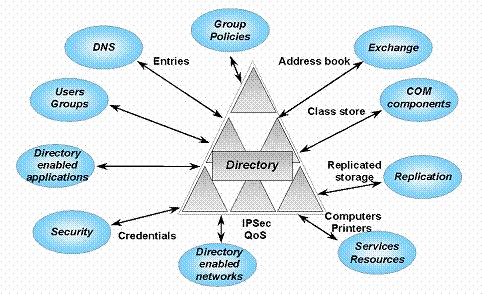Asked By
anonymous
7060 points
N/A
Posted on - 10/19/2011

What is an Active Directory? What are its functions? What is the hierarchy of active directories? How are active directories used? How can the Active Directories changes can be audited?
Active directories: usage and functions

Active Directories, also known as the "AD of the server" is a product by Microsoft and is mainly used within their MS Server products eg: Microsoft server 2003 Standard. The AD generally serves as the source or center location, where the administrator of the network manages the services, security and settings of the individual network users. Below you can look at what the active directory controls:

AD's are used to create order on a server, in terms of security, settings per user, authorization, stores credentials and provides this in one centrally managed console for the administrator to better be able to manage a domain network.
Within the AD you can manage multiple aspects of the workings of the networked users. From security policies to exchange email features. Without the Active directory, a windows domain server simply cannot function. Think of it as the central nervous system of the network.
Do you need more clarity?
Answered By
cs8888
0 points
N/A
#81143
Active directories: usage and functions

Hi,
An Active Directory acts as Windows, it can create a Windows domain in the network and can create a server through the location from the network administration and can assign a security policy for the computer.
The function of the Active Directory can be work for the domain using the multiple master designs, to the master domain controller. The Active Directory Domain Hierarchy can define groups, policies of the users in the network or administrative boundary. The hierarchy can be changed from the flat domain and it helps you to locate particular information, in order to find the next object.














